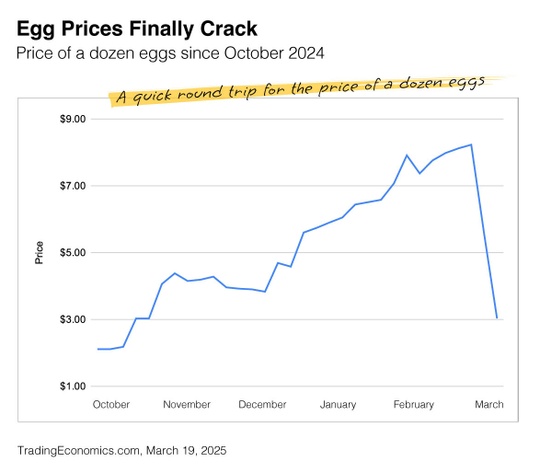Weekly Market Commentary
The Markets
Risk-on. Risk-off.
If you read the financial press, you may have seen the terms “risk-on” and “risk-off”. When investing, there is a risk-return spectrum. Stocks typically have higher risk and higher return potential than high-quality bonds. High-quality bonds have lower risk and lower return potential than stocks, although they typically have higher risk and higher return potential than cash.
In financial speak, investors are:
- Risk-on when they are excited about investing in stocks (and other types of assets that have higher risk profiles). “Risk-on environments can be carried by expanding corporate earnings, optimistic economic outlook, accommodative central bank policies, and speculation. As the market displays strong influential fundamentals, investors perceive less risk about the market and its outlook,” reported Adam Hayes for Investopedia. A risk-on environment may lead to rising stock prices.
- Risk-off when they become cautious and concerned about losses. Risk averse investors may sell some types of stocks (and other types of assets that have higher risk profiles) in favor of dividend-paying stocks and more stable types of investments that can help preserve principal. Risk-off environments may arise when economic growth slows, economic uncertainty rises, company earnings slide lower, consumer confidence wavers, or financial markets experience other kinds of disruptions. A risk-off environment may lead to falling stock prices.
Last week, investors moved from a risk-on to a risk-off outlook. The change in attitude resulted from concerns about:
- Tariffs. Concerns about tariffs intensified last week when “An unexpected move against car imports this week renewed warnings from economists that tariffs will almost surely raise consumer prices and harm economic growth,” reported Jeran Wittenstein and Ryan Vlastelica of Bloomberg.
- Sticky inflation. Last week, the personal consumption expenditures (PCE) index, which is one of the Federal Reserve’s preferred inflation gauges, showed that headline inflation remained steady month to month and year to year. However, core inflation, which excludes food and energy prices, rose month to month and year to year.
- Consumer sentiment. The final reading for consumer sentiment in March did not improve. “This month’s decline reflects a clear consensus across all demographic and political affiliations; Republicans joined independents and Democrats in expressing worsening expectations since February for their personal finances, business conditions, unemployment, and inflation,” wrote University of Michigan Surveys of Consumers Director Joanne Hsu.
During periods of market volatility, it’s important to keep a long-term perspective. Having an asset allocation strategy that reflects your risk tolerance and financial goals helps insulate your assets from market turbulence. Asset allocation helps manage risk, but it does not prevent losses
THE SILVER LINING OF MARKET DOWNTURNS. Volatile markets are challenging. Watching the value of your assets bounce higher and lower can be frustrating. In times like these, it can be helpful to focus on the opportunities that can be created by market volatility. One of those opportunities is tax-loss harvesting.
Investors “harvest” tax losses by selling an asset for less than they purchased it. Unfortunately, not every investment delivers stellar returns. Almost every investor has either owned an asset that loses value due to company underperformance or a market downturn. When the asset is sold at a lower value than its purchase price, the investor realizes a capital loss.
From a tax perspective, losses are quite valuable. They can help:
-
- Minimize capital gains tax. Capital losses can be used to offset capital gains, dollar for dollar. For example, if an investor sells shares of Company A for a gain of $1 and sells shares of Company B for a loss of $1, then the loss offsets the gain.
- Reduce taxable income today. When tax losses aren’t used to offset gains, the losses can reduce taxable income by up to $3,000. So, if an investor has a capital loss of $6,000 and a capital gain of $3,000, the capital loss could offset the capital gain and the $3,000 loss that is leftover could be used to reduce the investor’s taxable income.
- Reduce capital gains and taxable income tomorrow. When capital losses are greater than capital gains and income reductions combined, the extra losses can be carried forward and used to offset capital gains and taxable income in the future.
The key to tax loss harvesting is that the money from the asset sale must be invested in a new opportunity – perhaps capitalizing on the chance to invest in a strong company at an attractive price, which is another benefit of market downturns. In general, the new investment should fill a similar role in the investor’s asset allocation strategy to the investment that was sold.
The silver lining of market downturns is that investment losses can be tax wins.
Weekly Focus – Think About It
“Courage is the price that life exacts for granting peace.”
– Amelia Earhart, Aviation pioneer
Sources:
https://www.investor.gov/additional-resources/information/youth/teachers-classroom-resources/risk-and-return https://www.investopedia.com/terms/r/risk-on-risk-off.asp
https://www.bloomberg.com/news/articles/2025-03-28/market-rout-starts-with-big-tech-as-tariff-inflation-fears-hit?srnd=homepage-americas or go to https://resources.carsongroup.com/hubfs/WMC-Source/2025/03-31-25-Bloomberg-Market-Rout-Intensifies%20-%203.pdf
https://www.bea.gov/sites/default/files/2025-03/pi0225.pdf [Tables 5 and 7]
https://www.barrons.com/market-data?mod=BOL_TOPNAV or go to https://resources.carsongroup.com/hubfs/WMC-Source/2025/03-31-25-Barrons-DJIA-S&P-Nasdaq%20-%206.pdf
https://www.irs.gov/taxtopics/tc409
https://www.today.com/life/quotes/strong-women-quotes-rcna66486














